Light is energy; light is life. We, too, are energy and life, so there is no wonder that our body readily responds to specific wavelength exposure, resulting in broad systemic changes even after localized treatments. Today we’re talking about red light therapy for fertility, or Low-Level Laser Light Therapy (LLLT).
But let’s back up a bit and start at the beginning to do justice to the large, complicated, sensitive, emotionally charged, and ever-more-prevalent topic of fertility and reproductive health, approaching it with the respect it deserves.
Contents
Fertility Then & Now, a Stats-Backed Perspective
It seems that way back, women were hyper-fertile, commonly bringing dozens of children into the world and averaging 5-7 children per woman throughout history. Yet, the hygiene was poor, there were often more children than the young families could feed or take care of, and the mortality was high, keeping the population growth at a crawl. Improvement in health care and more resources secured a rapid population explosion, with women as far back as the 1960s still averaging five kids globally. This number dropped to 2.4 in 2021. Why the halving?
The reasons are multifaceted, and there are several factors at play. A part of the reason is explained by socioeconomic and educational changes – meaning women in most developed countries are now encouraged to get an education. Once educated, most choose to enter the workforce and be as focused on earning and business as their partners. Plus, the cost of essentials like food and shelter has gone up, and most households now need two parents working to cover the cost of bringing a child up.
There might also be a more sinister nuance of contemporary life at work, affecting the fertility of men and women worldwide. Sometimes progress in one area has unintended consequences in another. The rapid growth of industry, and unprecedented production of more goods and services than ever before, dumped a large amount of byproduct load into the environment that had remained relatively unscathed before the occurrence of large-scale industry.
We’ve also detached from food as a daily thing to tend, grow, pick, and cook personally, outsourcing our nutrient needs largely to an industry that turned food into shelf-stable products, no longer a natural part of local woods, gardens, and orchards. As more and more of the population migrated to the cities in search of a better life, cultivating our food became increasingly more difficult, and creating lasting, stackable, and profitable supplies was a logical move to feed the growing city population. But a few decades in, we’ve been seeing a backlash resulting in metabolic, immunological, and fertility dysfunction.
Reality keeps reminding us of its multidimensional Rubik’s cube nature – you cannot move a single piece of the puzzle without moving some pieces you wish had stayed in place. But cubes can be put together, meaning that when introducing large-scale changes with global impact, we better know the algorithms for keeping the pieces we want stationary. Average male sperm count decreased by 50% over the past 40 years, and in women, rates of polycystic ovarian syndrome (PCOS), endometriosis, diminished ovarian reserve (DOR), and premature ovarian failure are all on the rise. So is infertility (the inability to become pregnant after 6-12 months of trying) and subfertility (reduced chances to become pregnant compared to peers).
This is happening in Europe, North America, and Asia. Roughly 10-15% of couples who wish to build a family are not able to and are forced to try assisted reproductive therapies (ARTs), ranging from minimally to very invasive. This can become pretty expensive, so red light therapy for fertility, or Low-Level Laser Light Therapy (LLLT), comes as an ideal non-invasive, effective prep or complementary to natural conception and ARTs.
From NASA to Newborn
Our web-connected world piles on all sorts of anecdotal and unverified data, making the difficult journey of trying to find help for a fertility issue even harder. Red light therapy is no anecdote.
It is a NASA-developed non-invasive tech initially researched for its potential to help those floating in outer space, and far above the closest ER, quickly heal wounds. This is no snake oil saga, but a serious medical tool and a mind-baby of some of the most brilliant and well-funded scientists on the globe.
How Does LLLT Therapy Work?
The short answer is mitochondria stimulation. Most human cells have about 2000 of these microscopic energy factories, but egg cells have as many as 600,000. Eggs are, just like sperm, highly metabolically active.
The long answer makes you remember the elementary school biology class where you rolled your eyes at the teacher when they told you you needed to draw these nanometric oval or bean-shaped organelles. If you’ve forgotten everything else, you remember that mitochondria give us energy for, well, life—our own life and the ability to create a new one.
Everything that’s truly, officially living, produces ATP (adenosine triphosphate), an energy source used by every cell in the body. No ATP, no life. It is so important that some poisons, such as cyanide, actually work by stopping mitochondria from producing ATP. This is the cellular level on which red or infrared light therapy works (spanning wavelengths between 600nm and 850nm). This results in increased NO (nitric oxide) levels in tissues during and after the sessions. NO is a vasodilator, a smarty-pants term for it widens the diameter of blood vessels, thus increasing blood flow to the targeted area – in the case of red light therapy fertility treatment to the testes and ovaries. Stimulated mitochondria produce more ATP, which allows cells to work more efficiently, helping heal treated parts of the body with echoing effects throughout the body, such as reducing chronic inflammation and increasing blood circulation.
In addition to aiding in reproductive health, it can also be effective on skin conditions like eczema, sun damage, psoriasis, and acne, on certain types of cancer that respond to photodynamic therapy, gastritis, and urinary tract infections.
Red Light Therapy and Reproductive Health Issues
Painful Periods
We’ve sort of gotten used to living with pain as a part of the female experience, smiles on our faces mid-meeting, high-fiving cramps without blinking, and pretending we don’t feel the overwhelming need to squat down and hug our knees while discussing traffic directions. Some discomfort is unavoidable in life, but period pains vary from barely noticeable to debilitating crawl-into-hole-and-stay-in-a-fetal position. The pain can get so severe as to cause the need to throw up or faint. A Korean study of women with dysmenorrhea (period pain) experimented with IR LED in the form of a belt, locally treating the area in pain. The conclusion was that it was effective in reducing pain and improving the quality of life for the participating women. The likely mechanism by which LLLT achieved this was reducing inflammation and promoting deep relaxation and blood circulation through the area, which resulted in measurable relief.
Endometriosis
The endometrium is a hey-I-went-to-medical-school name for the tissue lining the uterus, which should stay within the confines of the womb yet sometimes doesn’t. This condition is called endometriosis, where endometrium cell doppelgangers grow in places they shouldn’t, like the fallopian tubes and ovaries – causing heavy flows, extreme pain during periods, and penetration. Red light therapy endometriosis treatments are showing promise in minimizing symptoms of this unfortunate and painful condition.
Is there a future in red light therapy endometriosis treatments? The research would suggest so. Forty women with endometriosis aged 24-32 received high-intensity laser therapy, and the study demonstrated that they subsequently experienced significant reduction in period pain as well as reduced endometrial adhesions.
Thyroid Stabilization
We’re very prone to see the body mechanistically as a sum of separate, isolated systems operating in the same body. But the body is far more complicated than a mechanical clock. It functions as a whole listening to a conductor and its systems are inter-coordinating in real-time, all the time. Organs, systems, and chemical environments all cooperate and not all reproductive health difficulties are related to structural or degenerative changes in the participating organs. Some are just echoes of an underlying hormonal imbalance such as thyroid disorders.
Receiving its mail at the address of the neck, the thyroid gland is a tiny thing playing a vital role in secreting hormones that help regulate the body’s core life-sustaining functions such as metabolism, heart rate, energy levels, and oh so much more. Thyroid disorders are on the rise (or we can argue we simply have better diagnostic tools) and are particularly prominent in women, knocking the whole body, including reproductive health, out of whack.
Red light therapy for female hormones via improving thyroid function is showing promise. Research has shown that individuals who have undergone an LLLT treatment needed lower doses of medication afterward, meaning thyroid function was improved and that LLLT can be a useful tool to combine with treatments for autoimmune conditions such as the prevalent Hashimoto’s thyroiditis.
Red Light Therapy for Infertility – Female & Male
There is rarely a greater blow straight to the soul than those who really want children struggling with infertility and exerting large emotional and financial strains to try and make their dream of a family come true. Approximately 50% of cases are a female reproductive issue, 30% male, and 20% a combination of female and male issues. The good news is that LLLT can be used to treat both partners and is also beneficial for satellite issues branching around reproductive health.
Red light therapy fertility treatments administered in a Japanese study to “severely infertile” women resulted in 21.74% of those who received red light therapy getting pregnant, of which 68% had a successful live delivery. There are also studies showing the value of red light therapy IVF prep helping with recurrent implantation failure, showing higher rates of pregnancy.
Embryo transfer after the laser therapy had higher rates of implanting, resulting in higher rates of clinical pregnancy and a lower risk of miscarriage – 18.2% compared to 27.3% in the control group.
Male infertility or impotence issues can also be a result of many factors such as lowered sperm density, motility, or abnormal morphology due to trauma, lowered vasodilating NO, autoantibodies, low testicular function, central hypogonadism, cancer, heavy smoking or alcohol consumption… Red light therapy was studied in the light of improving sperm quality by applying red or IR light therapy to the lower abdomen or testes. Ovaries or the uterus seem to benefit more from IR wavelengths that penetrate deeper into the tissues, while red light seems sufficient for the testes. The study reported improvement in sperm concentrations from 2 million/mL to 40 million/mL with a single treatment, suggesting a necessity to treat males with LLLT before sperm collection for IVF. There is also proof of improving motility post ejaculation, regardless of the wavelength, meaning enhanced chances of natural and assisted conception.
No matter where you are on this journey, dealing with any of the issues we have covered here, we encourage you to use this information as a starting point for exploring LLLT potential for your individual case. Hold on to hope if hope is not currently too emotionally draining, express your frustration with the ineffective and/or unfair, and keep trying regardless of the odds in a cautious, informed optimism – we’re rooting for you. We wish you courage, resilience, and relentlessness in fighting for your own cause – be it extending your family, regulating your hormones, or life without pain.




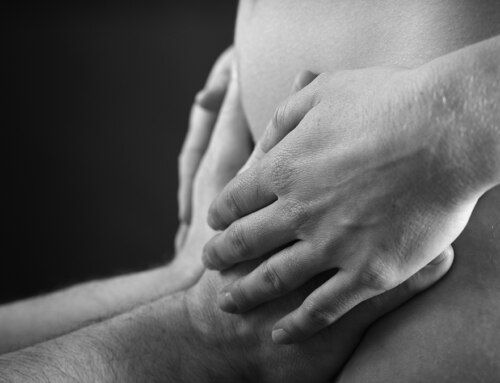











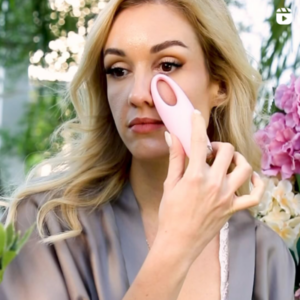
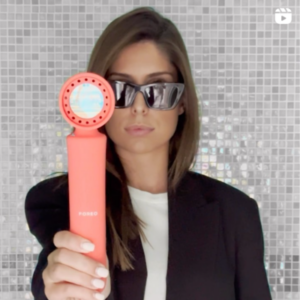

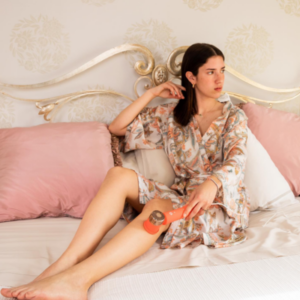
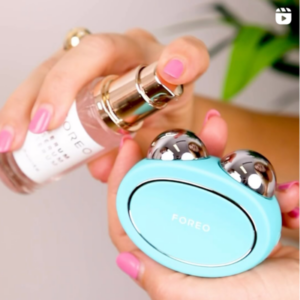
This is such an interesting topic, thank you for sharing this. As someone who hasn’t yet embarked on the journey towards parenthood but might need to be informed of such practices in the future, it’s something to definitely research further and look into. It’s well writen as well, so amazing all around <3
Hi there,
thank you for your support! <3 We are glad you like our interesting topics! :) Keep reading!